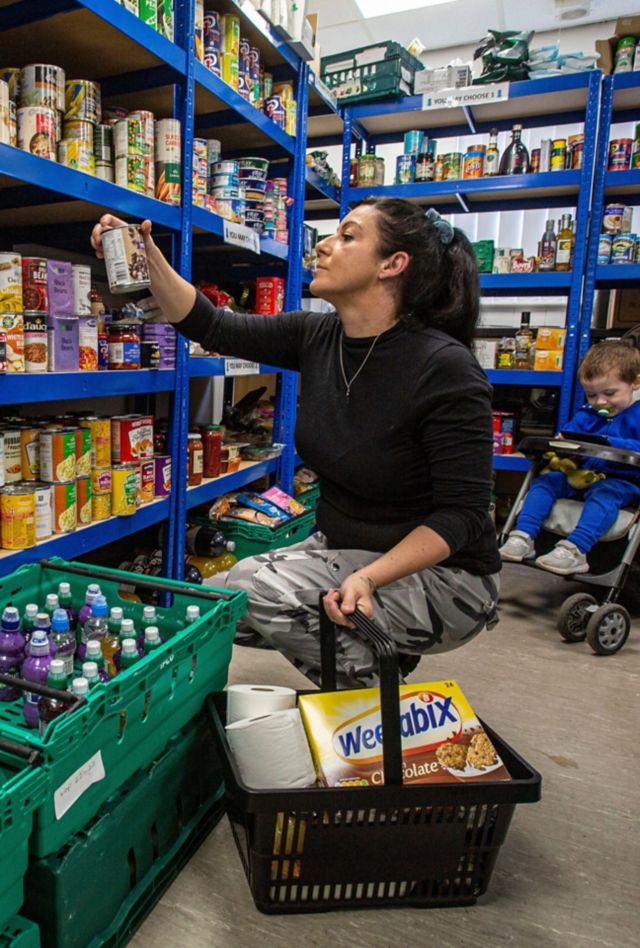Food Choice Boosts Pantry Efficiency, Benefits Neighbors

This article is from our NORC Now newsletter. Subscribe today.
March 2024
More pantries are providing food in grocery-style settings.
Providing a selection of food options is feasible for food pantries of all types and is beneficial to their patrons (aka “neighbors”) as well, according to the latest results from NORC’s evaluation of Feeding America’s Child and Family Choice Program.
A growing number of food pantries are allowing neighbors to select their foods in a grocery-like setting. Previously, most pantries offered a volunteer-packed, preselected array of foods. Feeding America, a nationwide network of food banks, food pantries, and other meal programs, commissioned NORC at the University of Chicago and More than Food Consulting, LLC, to conduct a three-year evaluation of this new “choice” model. The Morgan Stanley Foundation funded the program.
NORC has completed two years of a three-year food pantry evaluation.
In the first year of the evaluation, we surveyed 138 pantry directors to identify perceived barriers to offering more choice, which included limited space and staff time and too few volunteers. But we also found that none of those barriers were insurmountable and that pantries of all shapes and sizes could offer greater choice. In addition, we found that adding more choice improved pantry efficiency and staff, volunteer, and neighbor satisfaction.
In the second year of the evaluation, Feeding America selected 30 new food banks to participate in the evaluation, which included pre- and post-surveys of 98 pantry directors and 4,000+ neighbors who used 150 partner pantries. Participating pantries also received tools, resources, and technical assistance to facilitate the change to offering greater food choice.
About one-third of the pantry directors in the second grant year said they had increased choice and that it boosted the efficiency of their operations, promoted a sense of community, and improved staff and volunteer satisfaction. Another third of pantries maintained full choice over the evaluation period but reported adjusting their food offerings, hours, or staffing to make choice work better for their neighbors.
Neighbors using full-choice pantries reported a more satisfying pantry experience and wasting less of the food they received, a key operational benefit of moving to a full-choice model. Neighbors also reported having a greater diversity of food to choose from and more options that met their needs or preferences.
“More choice at food pantries allows neighbors to pick culturally appropriate foods that better meet their family’s needs,” said Kevin Brown, vice president in The Bridge at NORC, which helps connect researchers with on-the-ground practitioners to improve people’s lives.
The third year will refine and disseminate resources for pantries that want to offer more choice.
In the third year of our evaluation, currently in progress, the NORC-MTFC team will support a smaller sample of food pantries in collecting data from their neighbors to better plan for the transition to a full-choice model. Such data should help pantries better customize their services and offerings to the needs and preferences of their communities.
The team will also use in-person site visits to food banks and their partner pantries to refine a toolkit developed in the first two years of the program that Feeding America will then disseminate to more than 200 food banks in their national network.
“The evaluation gives food banks and pantries solid evidence that allowing neighbors to choose their food is doable, has positive effects on pantry operations, and improves volunteer, staff, and neighbors’ satisfaction,” said Gwendolyn Rugg, senior research scientist in The Bridge at NORC.
This article is from our flagship newsletter, NORC Now. NORC Now keeps you informed of the full breadth of NORC’s work, the questions we help our clients answer, and the issues we help them address.








